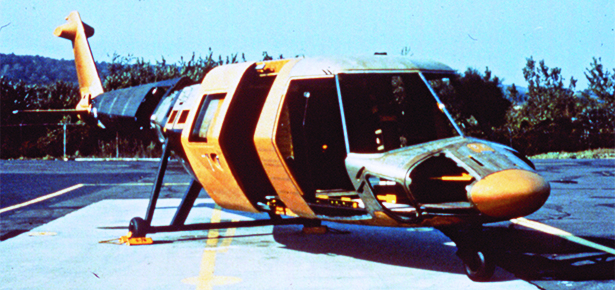Building Rotorcraft with Polymer Composites
Polymer composites were initially developed with transit and aviation in mind, aiming to provide a lightweight yet structurally stable alternative to comparatively expensive alloys. Since their earliest successful iterations, rotary-wing aircraft have benefitted significantly from research and development into composite materials.
Early attempts to design a working, vertical lift aircraft resulted in a slew of weird and wonderful designs with mixed successes. The first fully-functional helicopter is generally accepted to be the coaxial-rotor Breguet-Dorand Gyroplane Laboratoire, which was unveiled in 1931. It comprised a mix of materials including a steel tubular framework and a plywood tail surface.
Since then, composite materials have been ubiquitous in helicopter design. Laminated woods and fabrics were universally adopted for rotor design, before being displaced by aluminum and lightweight steel alloys. These offer structural improvements albeit with significant cost and weight considerations. The onset of advanced polymer composites in the 1940s and 50s dramatically changed the industry. Today, military rotorcraft routinely constitute as much as 80% polymer composite materials.

Prototype Polymer Composite Aircraft
Weight reduction is the standout advantage of polymer composites in rotorcraft design as it significantly reduces fuel consumption, providing appreciable cost and sustainability benefits. These materials also benefit from inherent corrosion resistant properties, which justified the pervasive use of the material within the fuelling systems of various rotorcraft. While some manufacturers are pushing the envelope with respect to polymer composite use in airframe designs, the most common applications remain the construction of fuel tanks, radomes, and propeller blades.
In an attempt to demonstrate the expansive potential of polymer composites in rotorcraft manufacture, Strongwell developed a helicopter constructed almost entirely out of composites. This experiment was carried out with the full support of the US government, who have recognized the potential commercial and military applications of all-composite rotorcraft.
The proprietary component was a windshield post profile constructed by pultrusion of carbon fiber mat with a vinyl ester resin. This five-foot long trapezoid ran from the nose wheel to the roof of the helicopter directly through the windshield. In a full-scale crash landing test where the front wheel struck the landing pad first, this polymer composite post sustained less than half the physical damage considered acceptable for a structural component.
This test is just one of many indicators that polymer composites are still in the phase of taking off when it comes to rotorcraft manufacture and design.
Polymer Composites from Strongwell
Strongwell specializes in the design and supply of standard and custom-built polymer composites for all areas of application. If you have any questions about our manufacturing capabilities, please do not hesitate to contact us directly.